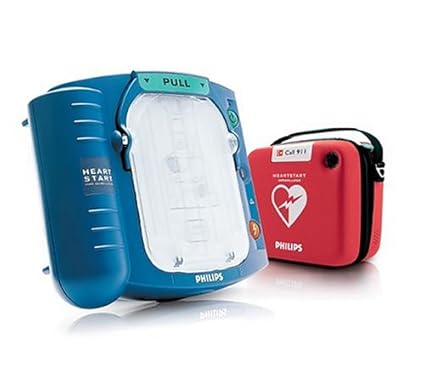| Online: | |
| Visits: | |
| Stories: |

| Story Views | |
| Now: | |
| Last Hour: | |
| Last 24 Hours: | |
| Total: | |
Can an AED save your life?
Someone was asking over at ar15.com:
“Will shock with an AED significantly improve the survival chances of a heart attack victim if hospital care is not immediately available? And how immediate is immediate? 15 minutes, 2 hours, 24 hours?”
AED stands for automated external defibrillator and yes, yes it would. According to the American Red Cross, “Sudden cardiac arrest is one of the leading causes of death in the U.S. Over 350,000 people will suffer from sudden cardiac arrest this year .” Keep in mind that the average 911 response time is 8 to 12 minutes and during sudden cardiac arrest, for each minute defibrillation is delayed, the chance of survival is reduced approximately 10%.
Given that cardiac arrest is the leading cause of death in America, an AED is more likely to save you than a gun and pretty much most other gear you have.
Having said all this, common sense still applies. If you’re in your 20s or early 30s and in good health you probably have better things to spend your money on than dropping a grand on an AED. If you’re in your 50 and live in an area where response time isn’t as good as it could be, then you might want to give it some though. If you’re in your +50, have a history of cardiac problems and have little chance of getting first responders to help you in time, then you might want to give it some further thought. At the end of the day, is an AED worth it? That’s up to you to decide.
Philips HeartStart Home Defibrillator (AED) $1,199
AED are not as expensive as they used to be but we’re still talking some serious money, the one shown above, Philips HeartStart Home Defibrillator is available in Amazon goes for 1.200 usd. On the bright side performance has improved considerably in the last few years and they are very easy to use even by the layperson. The AED works automatically, only shocking when necessary after reading the patients heartbeat. Experts at Johns Hopkins claim that “use of the laptop-size devices (AED)by random bystanders more than doubled survival rates among victims felled by a sudden heart stoppage due to a heart attack or errant heart rhythm.” This was back in 2007, with more rudimentary AED technology compared to the one available today.
FerFAL
Fernando “FerFAL” Aguirre is the author of “The Modern Survival Manual: Surviving the Economic Collapse” and “Bugging Out and Relocating: When Staying is not an Option”.
Source: http://www.themodernsurvivalist.com/archives/4200






 Join the forum discussion on this post
Join the forum discussion on this post